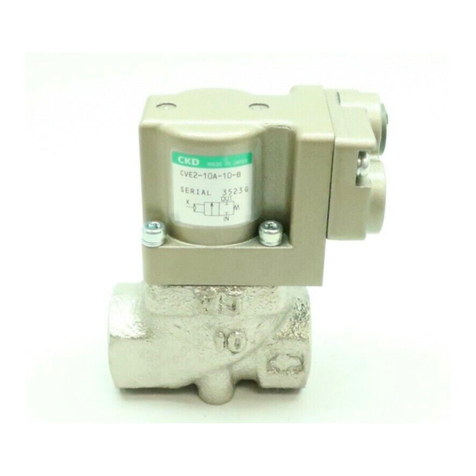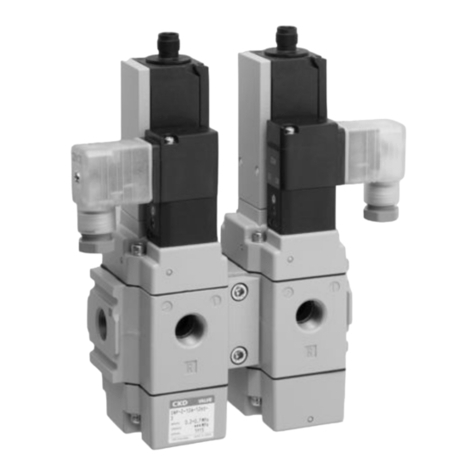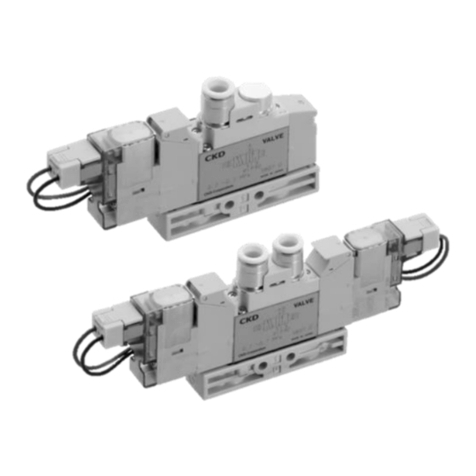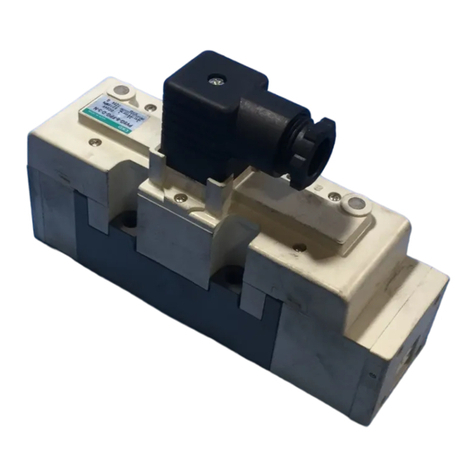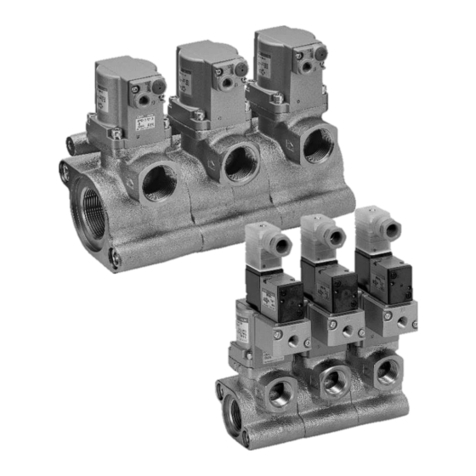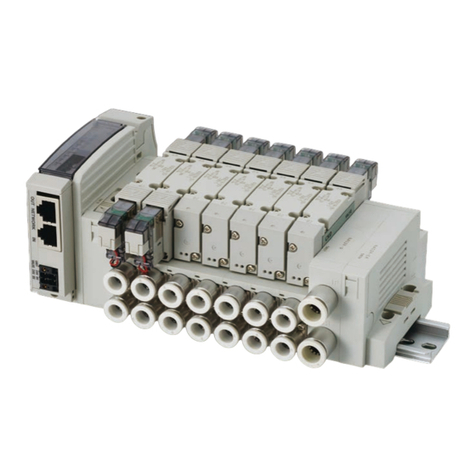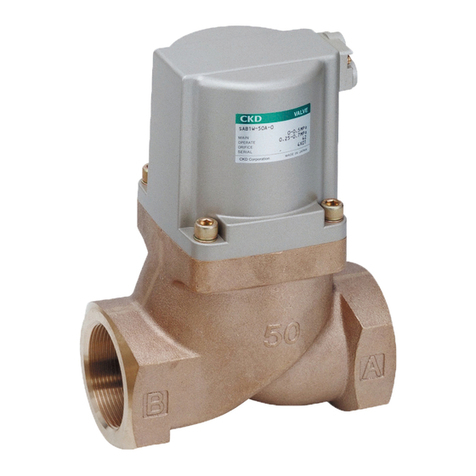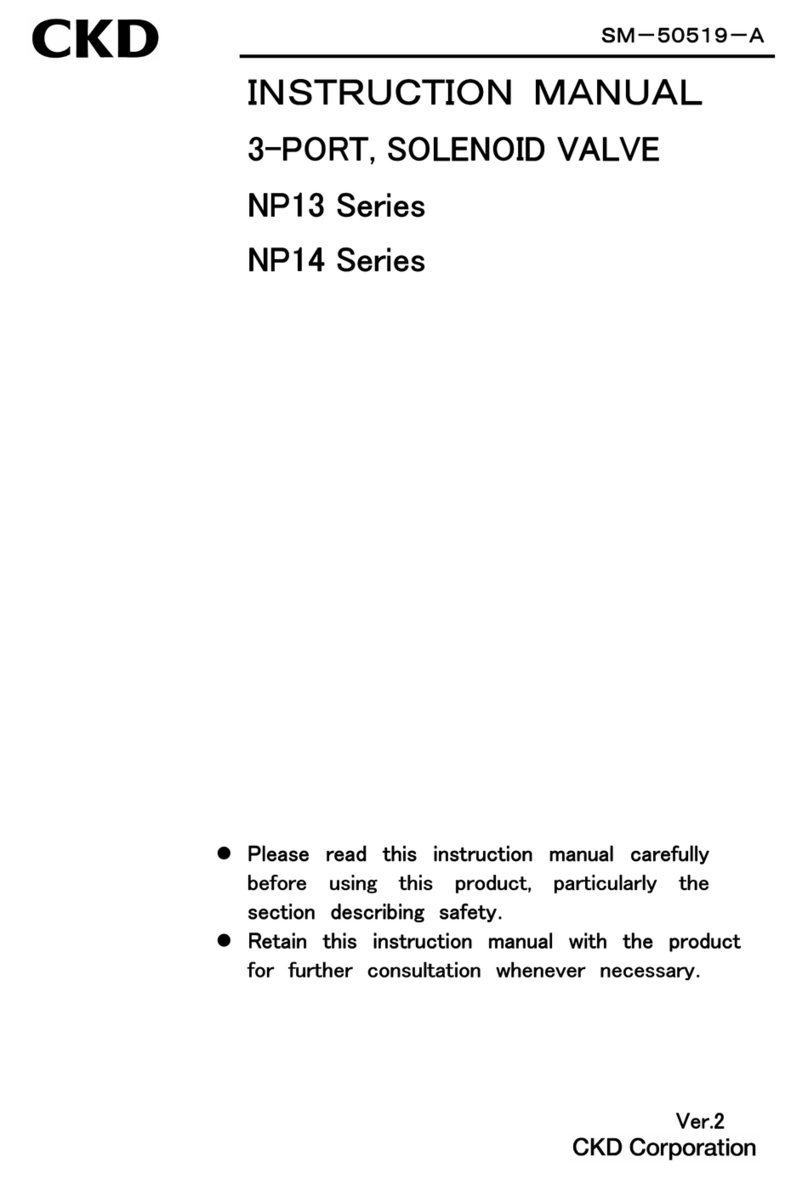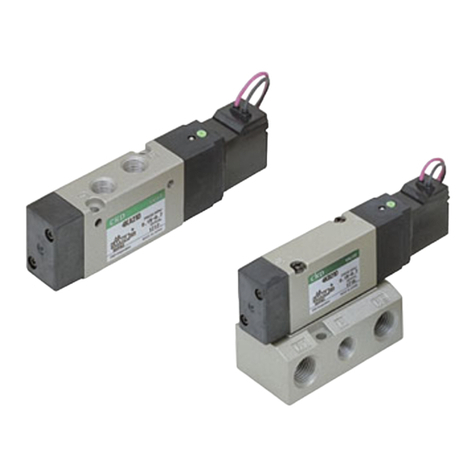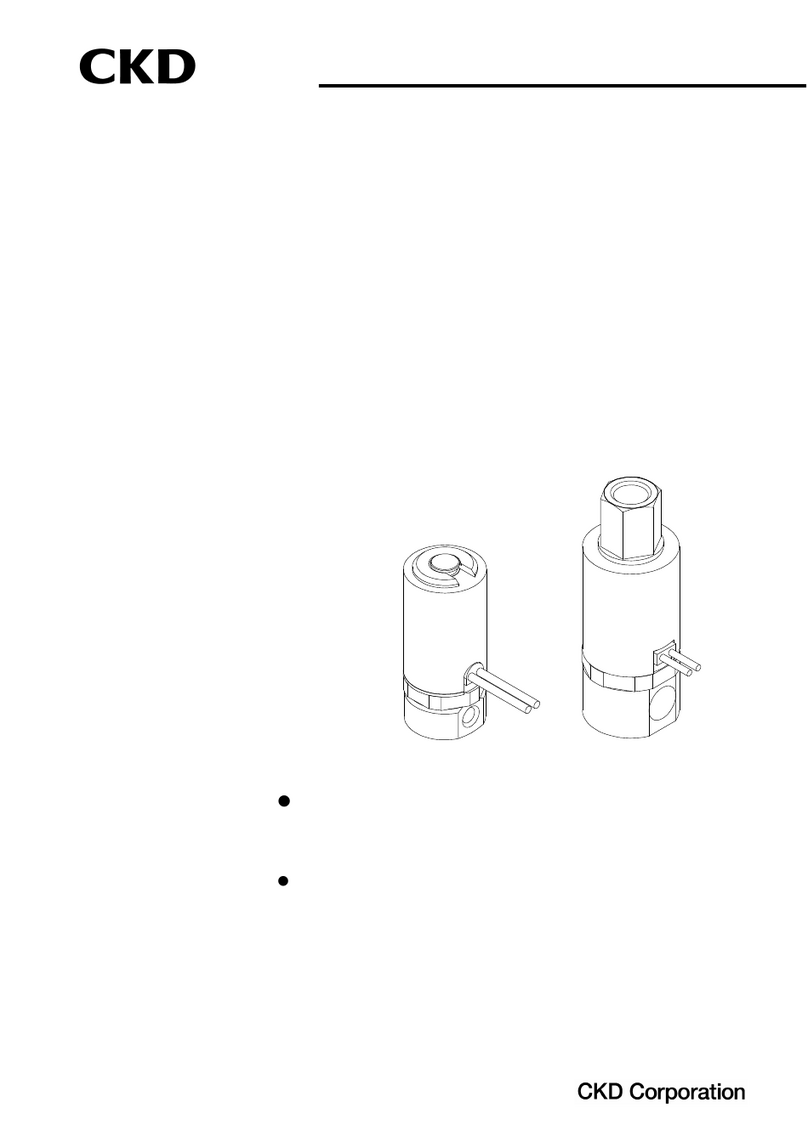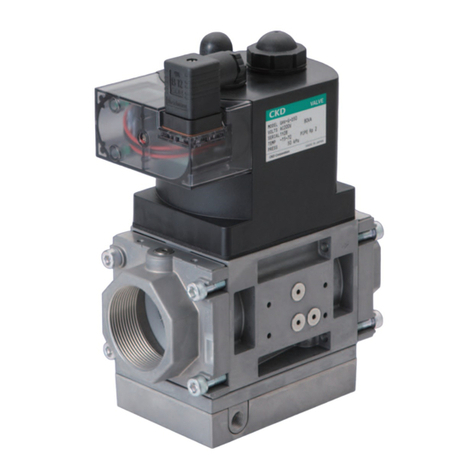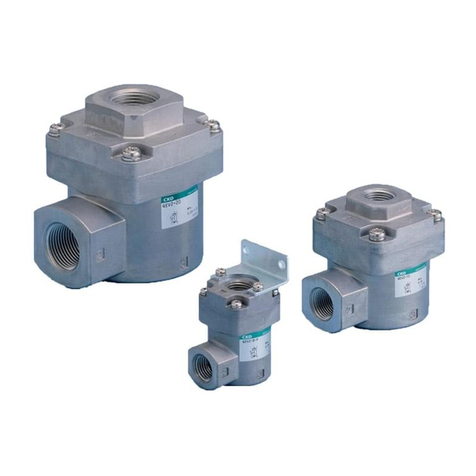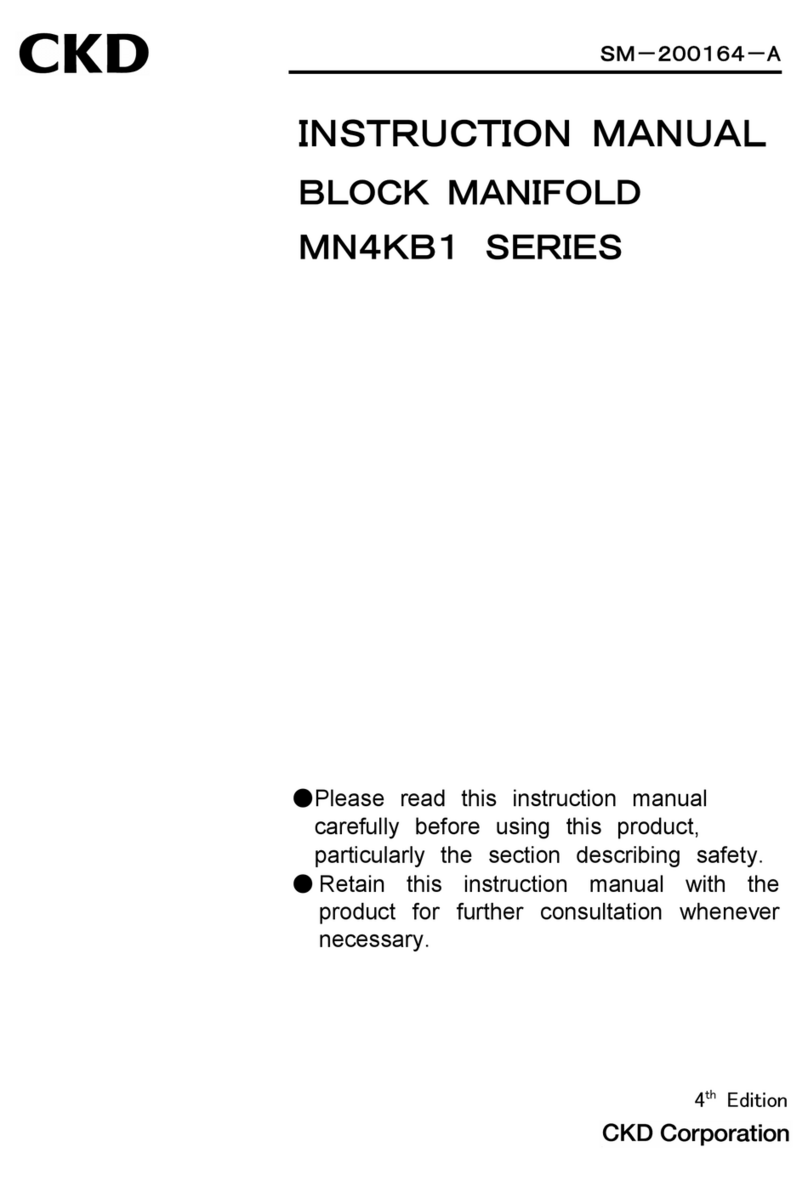
[SM-208676-A/3]
―1
SAFETYPRECAUTIONS
WhendesigningandmanufacturingadeviceusingCKDproducts,themanufacturerisobli-
gatedtomanufactureasafeproductbyconfirmingsafetyofthesystemcomprisingthefol-
lowingitems:
・Devicemechanism
・Pneumaticorwatercontrolcircuit
・Electriccontrolthatcontrolstheabove
Itisimportanttoselect,use,handle,andmaintaintheproductappropriatelytoensurethat
theCKDproductisusedsafely.
Observewarningsandprecautionstoensuredevicesafety.
Checkthatdevicesafetyisensured,andmanufactureasafedevice.
1.Thisproductisdesignedandmanufacturedasageneralindustrialmachinepart.Itmust
behandledbysomeonehavingsufficientknowledgeandexperience.
2.Usethisproductwithinitsspecifications.
Thisproductcannotbeusedbeyonditsspecifications.Additionally,theproductmustnotbemodified
ormachined.
Thisproductisintendedforuseingeneralindustrialdevicesandparts.Usebeyondsuchconditionsis
notconsidered.ConsultwithCKDfordetailswhenusingtheproductbeyondtheuniquespecification
range,outdoors,orinthefollowingconditionsorenvironments.Inanycase,measuresforsafetyshall
beprovidedwhenthevavlemalfunctions.
①Useforspecialapplicationsrequiringsafetyincludingnuclearenergy,railroad,aviation,ship,vehicle,
medical equipment, equipment or applications coming into contact with beverage or food,
amusementequipment,emergencyshutoffcircuits,pressmachine,brakecircuits,orforsafeguard.
②Useforapplicationswherelifeorassetscouldbeadverselyaffected,andspecialsafetymeasures
arerequired.
3.Observecorporatestandardsandregulations,etc.,relatedtothesafetyofdevicedesign
andcontrol,etc.
ISO4414,JISB8370(pneumaticsystemrules)
JFPS2008(principlesforpneumaticcylinderselectionanduse)
IncludingHighPressureGasMaintenanceLaw,OccupationalSafetyandSanitationLaws,othersafety
rules,standardsandregulations,etc.
4.Donothandle,pipe,orremovedevicesbeforeconfirmingsafety.
①Inspectandservicethemachineanddevicesafterconfirmingsafetyoftheentiresystemrelatedto
thisproduct.
②Notethattheremaybehotorchargedsectionsevenafteroperationisstopped.
③Wheninspectingorservicingthedevice,turnofftheenergysource(airsupplyorwatersupply),and
turn off power to the facility. Release any compressed air from the system, and pay enough
attentiontopossiblewaterleakageandleakageofelectricity.
④When starting or restarting a machine or device that incorporates pneumatic components, make
surethatsystemsafety,suchaspop-outpreventionmeasures,issecured.
